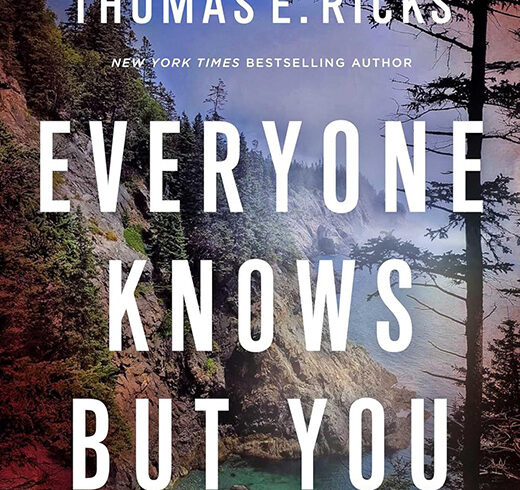Wildflowers of Maine Islands: The Downeast and Acadia Coasts
By Glen H. Mittelhauser; University of Maine Press, 2021
Every April and May in Maine the world starts to turn color again. But differently in different geographies, we gather from Glenn Mittelhauser’s new guide, Wildflowers of Maine Islands.
“There is much difference in the coastal plants found southwest of Muscongus Bay,” Mittelhauser tells us in the introduction, due to the effects of the cold Labrador Current and the diversity of habitats among the islands of Knox, Waldo, Hancock, and Washington counties. A look through the copiously illustrated guide reveals that many wildflowers seen abundantly on the Midcoast mainland are also common on the islands, but many, surprisingly, are not.
It’s strange to learn Queen Anne’s lace, which takes over whole fields here inland, is uncommon on the islands.
The book itself provides an identification key inspired by the popular Newcomb’s Wildflower Guide, but unlike Newcomb’s it’s illustrated with color photos instead of drawings. Images showing family characteristics help initiate the ID process.
In the main text, a photo of each species is accompanied by a brief description of physical characteristics, taxonomic information (including alternative names), distribution, and abundance ranging from common and occasional, to uncommon, rare, and very rare.

Dandelions, for example, are common everywhere in spring, including on the islands. Starting in June in my fields a few miles inland in Troy, little dancing yellow flowers that you can mistake for dandelions start popping up—we call them hawkweed, and there are a lot of different kinds. The islands share in common mouse-ear hawkweed (Hieracium pilosella) which Mittelhauser calls mouse ear king-devil, and orange hawkweed (H. aurantiacum), which Mittelhauser calls orange king-devil. (This flower is often mistakenly called Indian paintbrush, which is actually the snapdragon Castilleja coccinea, with pointed, red-tipped leaves.)
Occasional on the islands is meadow hawkweed (H. caespitosum), which Mittelhauser calls yellow king-devil. But others we see here, such as common hawkweed (H. lachenalii) and wall hawkweed (H. murorum), are rare or very rare on the islands.
We have beach rose (Rosa rugosa) commonly, and so do the islands, dense thickets of them with their more finely prickly stems, as well as Virginia rose (Rosa virginiana) with fewer and longer spines. Lowbush blueberry, white meadowsweet, and Carolina sea-lavender are common on the islands too.
Sea-side goldenrod (Solidago sempervirens) and wrinkle-leaved goldenrod (S. rugosa) are common, but other goldenrods that are equally abundant inland, such as grass-leaved goldenrod (Euthamia graminifolia) turn out to be occasional or, like Canada goldenrod (S. canadensis), uncommon to rare on the islands. This must give the late-summer islands a different tinge of gold.
Some other rampantly common coastal flowers are on the islands also are uncommon or rare. It’s strange to learn wild carrot (Daucus carota) or Queen Anne’s lace, which takes over whole fields here inland, is uncommon on the islands.
Valerian (Valeriana officinalis), a beautiful white semblance of wild carrot escaped from gardens, has a weedy presence even on roadsides in Belfast and environs, but is uncommon on the islands. In early summer, purple, blue, and rose-colored lupines light up Waldo County fields, but are “rare” on the islands. I wish the patch of stinging nettles I tripped and rolled through raking my back on Bailey Island when I was a boy had been uncommon there on Casco Bay, as it is on the Downeast islands.
Wildflowers of Maine Islands is a beautiful book, which as I write this in the dead of winter makes me long for summer. It’s as illuminating, easy to use, and ruggedly made for the field as its predecessors, The Plants of Acadia National Park and Grasses and Rushes of Maine, also by Mittelhauser. They’re all available from the University of Maine Press.
Dana Wilde, a former editor and college professor, lives in Troy and writes the Backyard Naturalist column for the centralmaine.com newspapers. He is a member of the National Book Critics Circle.





